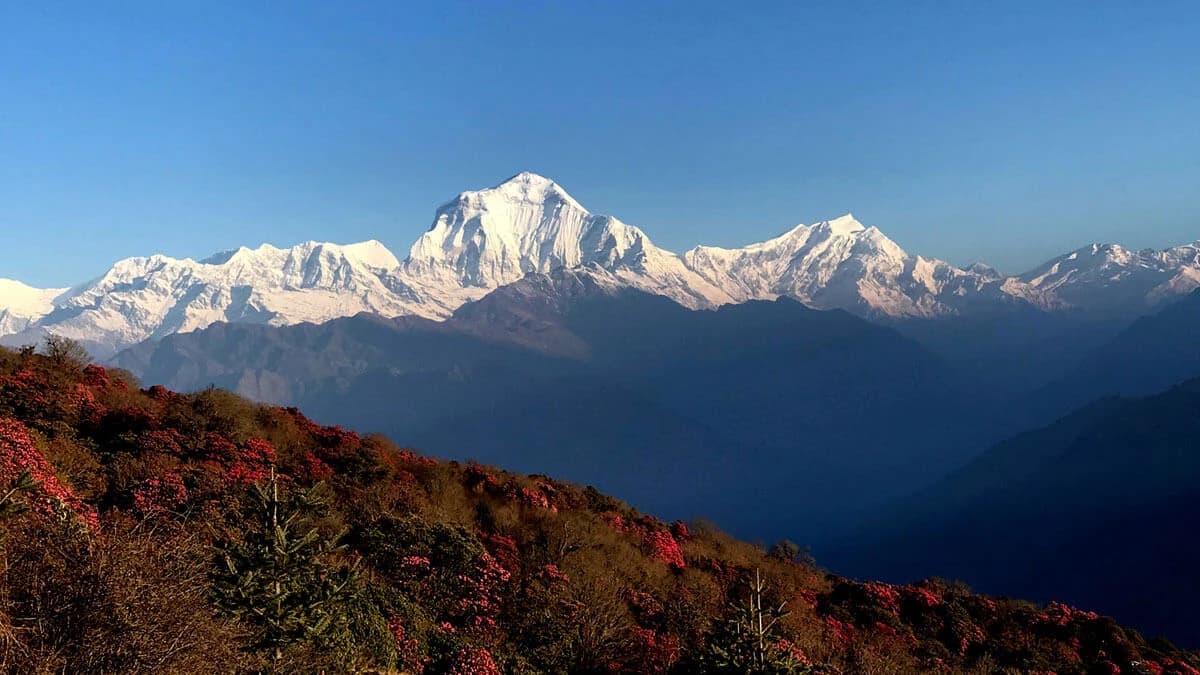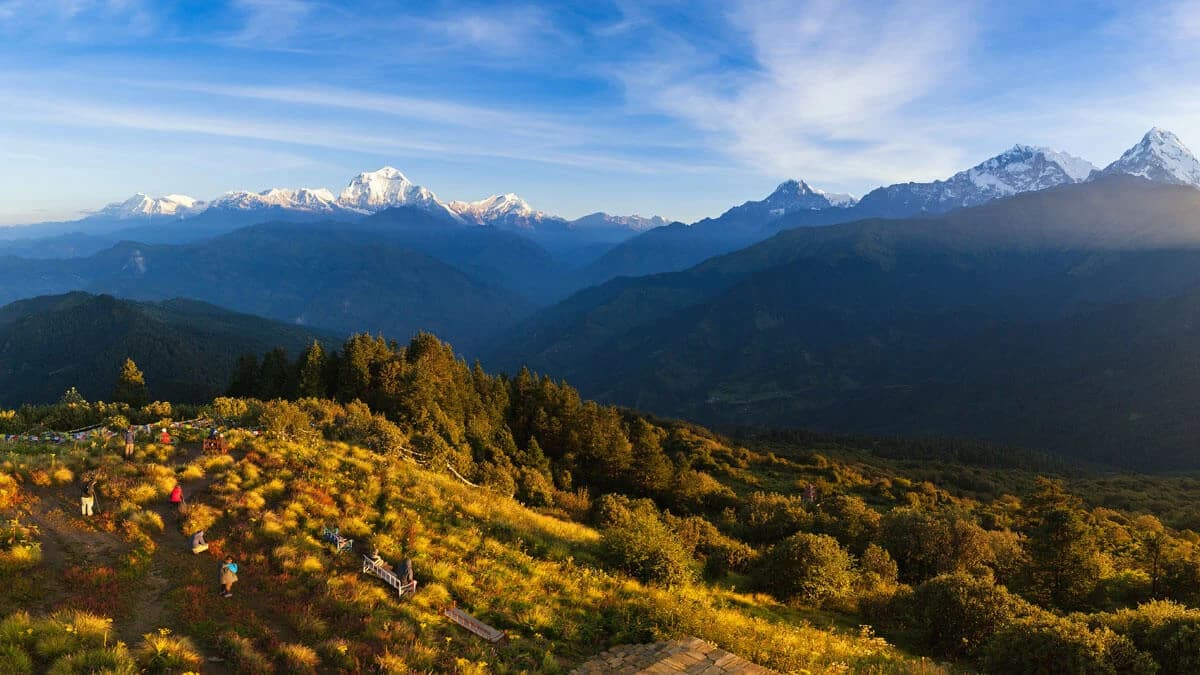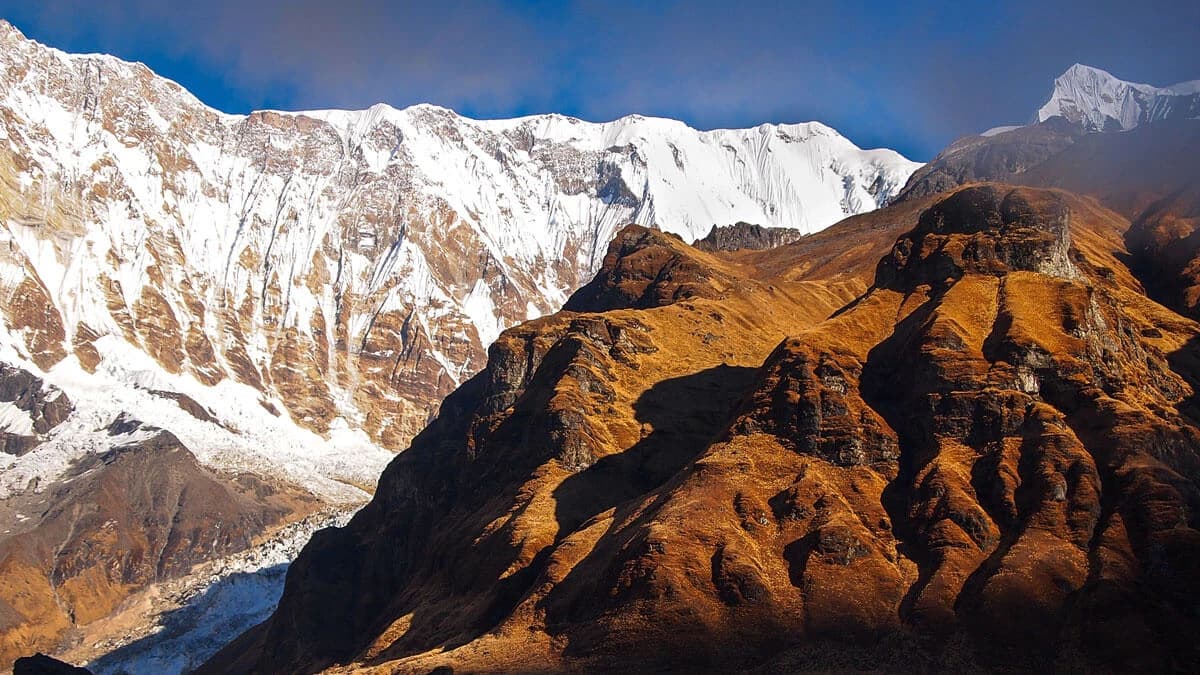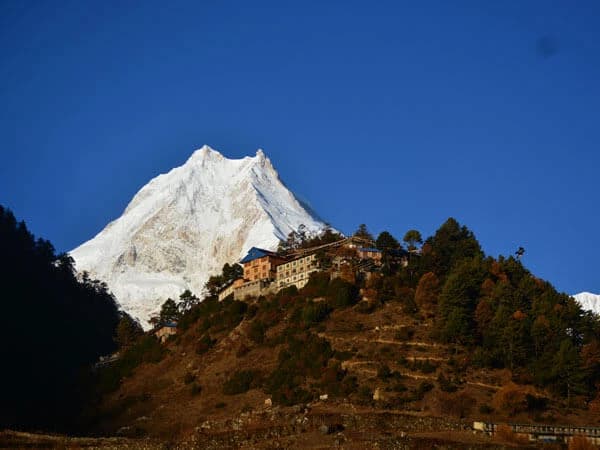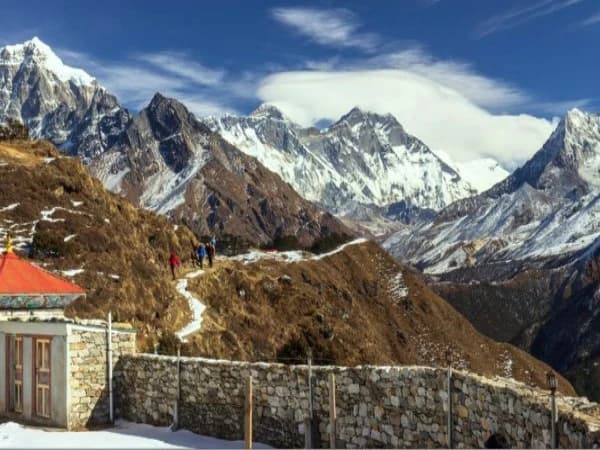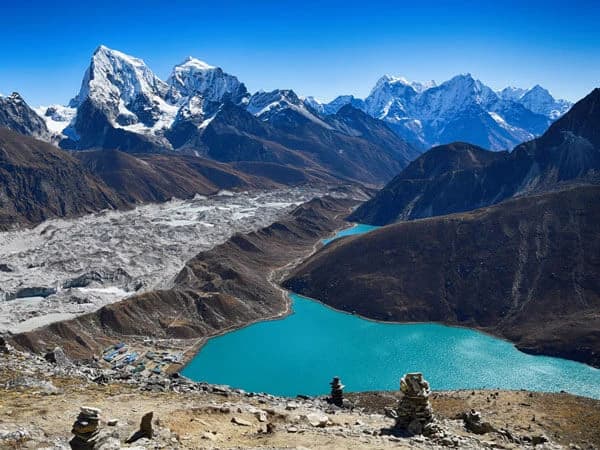The Dhaulagiri Circuit Trek – 20 days a Journey Through the Wild Heart of the Himalayas
Nepal is a small though grand country nestled on the lap of the majestic Himalayas has 8 of the 14 Highest mountains of the world, Mount Everest being the highest in the world. Whereas Everest or Annapurna attract flocks of trekkers every year, Dhaulagiri Circuit Trek is a real hidden treasure, and a trail that should be on the map of true adventure-seekers, disregarding its relative lack of popularity. This 20-day journey will be a Himalayan saga, with a rich package of an end-to-end adventure in remote, ruggedly wild western Nepal.
Your trip will start in Kathmandu, a place full of ancient temples, fierce bazaars, and holy stupas. Meeting your guide here begins with a briefing of your fellow trekkers in a pre-trek session, an act that introduces your practical guide into the high Himalayas in an exciting prologue. Just a short flight takes you to Pokhara, the beautiful lakeside city of Nepal, a city against the backdrop of the sacred mountain of Machapuchare. The mountains can be seen on the horizon from this lakeside city.
The trek officially begins with a scenic drive in Darbang, which starts after leaving Pokhara. Trails here are guided through terraced fields and bustling villages, Dharapani and Muri, where a friendly welcome will be accompanied by a pace of life which has not been affected by modernity. The scenery is changing daily. On leaving the green low-lying valleys of Boghara and Dobhan Kharka, you ascend through rhododendron forest and mossy trail to the height of Sallaghari and the Italian base Camp 3,660 meters; this climb is dramatic and presents a spectacular alpine terrain.
The world down below gradually tends to dim out as you ascend, accompanied by nothing but silence, snow, and skies. The acclimatization days at the Italian Camp Base, then the Glacier Camp and the Dhaulagiri Base Camp, are not only for rest but an invitation to drink in the Himalaya and experience the magic of the Dhaulagiri massif. Dhaulagiri I stands like a frozen giant, tall and erect, towering at some 8,167 meters, flanked by glaciers that have been reflecting the rays of the sun. The mountains in Nepal are not only higher than either the Alps or the Rockies, they are more savage, more legendary. Nature is endless, primeval, and holy here.
Crossing French Pass (5,360m) is itself an epic high point, a very challenging climb which is worth the prize of other-it looks like the sea of peaks. There are not many places on Earth as remote and huge. True to its name, the Hidden Valley is a secluded place that is walled off by massive rams. It is a time and space forgotten by the clock, pure, unreal, and humbling.
Beyond that, we pass Dhampus Pass and into the irresistible alpine meadows of Alu Bari, a descent that leads us into the wind-blown village of Jomsom, where modernity reappears gradually with the paving stones and the apple groves. You have your high-altitude story concluding with a twin flight returning you to the warmth of Pokhara and Kathmandu.
And this trek is not just that, a physical challenge. It is an immersion in the culture. Through isolated Magar and Gurung villages, you crawl by and watch a lifestyle steadied by mountains, pure, soulful, and spiritual. Nights in teahouses and tented camps are ripped by the crunch of firewood and the gentle rustling of the prayer flags hanging in the wind.
Most vacations in Asia are crafted, and people are involved in various activities where places are full of tourists, but the 20 days Dhaulagiri Circuit Trek is a unique and untainted Himalayan experience. It belongs to the adventurer who wishes to be left alone, the wanderer who wants substance, the Being that pines to the wild.
Nepal is not only a home to the highest mountains in the world, but it is a place where legends come up just like the mountains. It doesn't matter whether you enjoy the morning light over Annapurna, standing on the nose of a mountain ridge, or standing breathless gazing at the ice-clad face of Dhaulagiri, but something will be dawned into your heart: the mountains in Nepal do not simply work your legs - they stir your soul.
Come then and you are in the roads made by shepherds and climbers long ago, and walk along some of the rivers that roar and under the stars all shot in the Heaven. The Mountains of Nepal will demonstrate to you what it means to be alive. Make Dhaulagiri Circuit your lifetime memory.
Highlights
20 Days the Dhaulagiri Circuit Trek is a challenging and rewarding adventure that takes trekkers through some of Nepal's most remote and spectacular landscapes. Here are the main highlights of this unforgettable trek:
- Dhaulagiri Massif: Trekking around the Dhaulagiri massif offers mesmerizing views of some of the highest peaks in the world, including Dhaulagiri I, the seventh-highest mountain globally. The rugged beauty of the massif, with its snow-capped peaks and glaciers, provides a stunning backdrop throughout the journey.
- French Pass (5,360m): Crossing the French Pass is a thrilling and unforgettable experience. Situated at 5,360 meters, this high mountain pass offers panoramic vistas of the surrounding Himalayan peaks, including Dhaulagiri, Tukuche, and Nilgiri. The challenging ascent to the pass and the breathtaking views from the top make it a highlight of the trek.
- Hidden Valleys: The trek takes trekkers through remote and secluded valleys rarely visited by tourists. These hidden valleys are characterized by their pristine wilderness, alpine meadows, and crystal-clear lakes, providing a peaceful and serene environment amidst the towering peaks of the Himalayas.
- Cultural Encounters: Along the trekking route, trekkers can interact with local communities, including the Gurung, Magar, and Thakali ethnic groups. These encounters offer insight into the unique culture, traditions, and way of life of the mountain people of Nepal. Trekkers can also visit traditional villages, monasteries, and Buddhist stupas, immersing themselves in the region's rich cultural heritage.
- Challenging High Passes: Trekkers cross other high mountain passes besides the French Pass, such as the Dhampus Pass (5,200m). These passes present a formidable challenge, with steep ascents, rocky terrain, and narrow trails. However, the sense of achievement upon reaching the summit and the breathtaking views from the top make the effort worthwhile.
- Panoramic Mountain Views: Throughout the trek, trekkers are treated to breathtaking views of the Himalayan peaks, including Dhaulagiri, Annapurna, Nilgiri, and Machhapuchhre. The ever-changing landscape, with its snow-capped peaks, deep valleys, and lush forests, provides stunning photo opportunities at every turn.
- Pristine Wilderness: The Dhaulagiri Circuit Trek takes trekkers through some of Nepal's most remote and untouched wilderness areas. Trekkers traverse diverse landscapes, including dense forests, glacial moraines, and alpine meadows, experiencing the raw beauty and solitude of the Himalayan wilderness.


